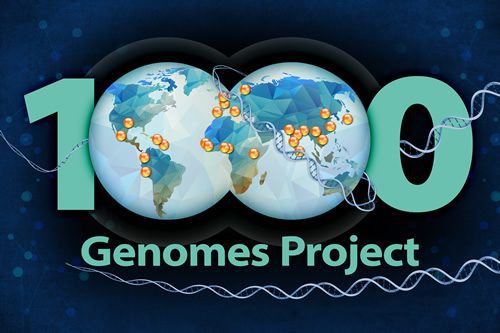Every Person and Genome is Unique: Variation in the Human Genome
Top Milestones in Human Genetics and Genomics Over 75 years (1948-2023)
State-of-the art tools perfected during the 2000s led to the discovery of the tremendous variation in the human genome. Knowledge gained from this work included learning that the genomes of two human individuals are 99.5% identical at the DNA level, yet every person has variants that make them unique. Also, it was understood that sets of genetic variants could be passed along from one generation to the next and great progress was made in identifying variants that could result in disease. Moving forward, the goal is to sequence the genomes of as many people worldwide as possible—the most effective way to uncover the whole catalogue of variants of humanity.
2004
With the completion of the Human Genome Project, it became clear that there was a great deal of variation in the human genome. Initial analysis found that 1 in every 1,300 nucleotides in the genome differed between individuals, and the vast majority of these variants were in the form of single-nucleotide variants (SNVs). More than a million SNVs were identified at that time.
Source: Gonzaga-Jauregui, Claudia. “The Human Genome.” In Brenner’s Encyclopedia of Genetics, 3rd Edition.
2003-2010
The discovery of haplotypes, sets of genetic variants that are passed along from one generation to the next as a unit. To better understand haplotypes, the International Haplotype (HapMap) Project was established in 2003, with the goal of building a haplotype map of different populations around the world. The HapMap project characterized 11 different ancestry groups through genotyping and early large-scale sequencing.
Gonzaga-Jauregui, Claudia. “The Human Genome.” In Brenner’s Encyclopedia of Genetics, 3rd Edition.

2015
Building on the work of the HapMap project and using next-generation sequencing technologies, the 1,000 Genomes Project Consortium sequenced 504 individuals from 26 world populations and found more than 88 million variants.
Source: Gonzaga-Jauregui, Claudia. “The Human Genome.” In Brenner’s Encyclopedia of Genetics, 3rd Edition
The advent of next-generation sequencing and other techniques made it possible to sequence ancient DNA. Archaic humans like Neanderthals, Denisovans, and other hominids have been sequenced, opening doors to the past and enabling analyses to understand the evolution of the human genome over time
Source: Ancient DNA analysis | Nature Reviews Methods Primers
2016-Present
Reference population databases are used to characterize and aggregate human genomic variation. These databases have also proven useful in identifying candidate pathogenic variants among the wide range of variants picked up during sequencing and establishing links between diseases and genes. To date, the Genome Aggregation Database (gnomAD) is the largest such database, with information from more than 195,000 individuals.
2021
Making use of third-generation single-molecule long-read sequencing, researchers have come together to start the Human Pangenome Project, designed to collect whole-genome sequences from diverse populations around the world.
Gonzaga-Jauregui, Claudia. “The Human Genome.” In Brenner’s Encyclopedia of Genetics, 3rd Edition.
